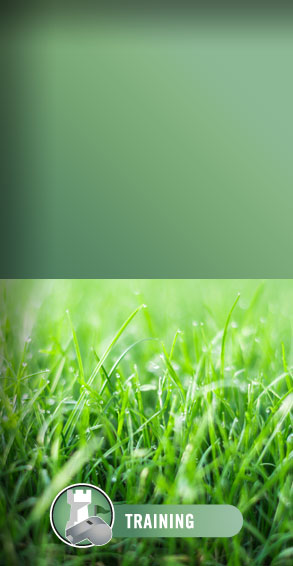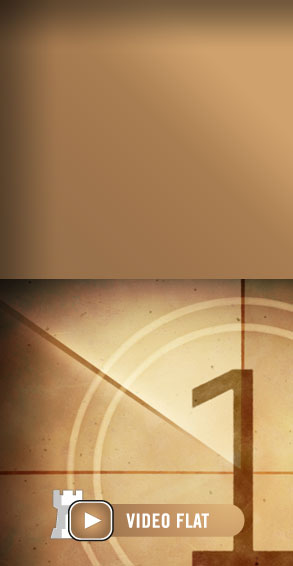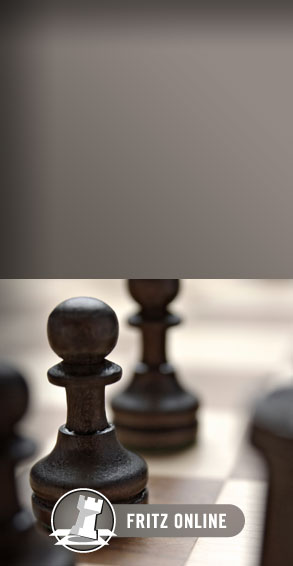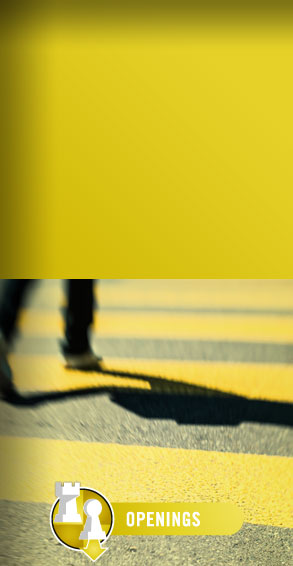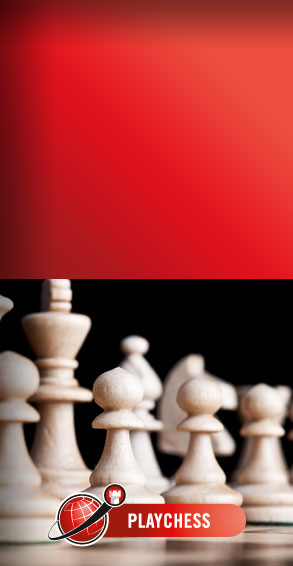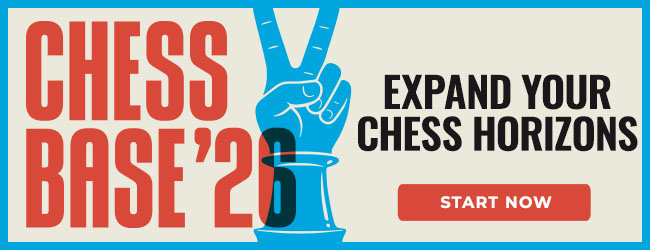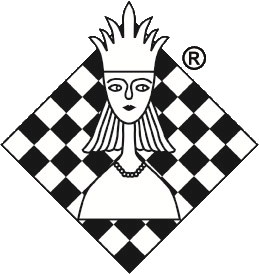A review
Beyond calculation, players of all levels "plan" during a chess game. When we try first to find candidate moves, we sometimes fail to understand which move is needed for our position. Instead, when we are able to formulate a plan, the candidate moves become obvious. IM Robert Ris, an experienced trainer and an active player himself, focuses on strategic training in his video series "Strategy Training: How to make a plan". At every level this is the course needed to bring one's own chess understanding to the next level.
Last year ChessBase began a new approach in their FritzTrainer video series, injecting novelties — not in the chess opening sense — the benefits of which redound to the club player. No longer is the DVD (or digital download) just some video lectures and a database, but rather the lessons are supplemented by interactive exercises. They now resemble the lessons we would receive from a real coach, whether the subject matter is openings or — like in this case — the science of planning in its most fundamental elements.
Fritz 17 es la nueva edición de aquel mismo programa de ajedrez Fritz que ha fascinado al mundo del ajedrez desde hace unos 25 años (¡!): las victorias de Garry Kasparov y de Vladimir Kramnik; los métodos innovadores y modernos de entrenamiento para jugadores aficionados y profesionales; ajedrez cibernético en el servidor de Fritz, etc. Fritz es “el programa de ajedrez más popular de Alemania” (Der Spiegel) y ofrece todo lo que necesita el ajedrecista. La novedad más espectacular: Fritz 17 incluye el módulo basado en una red neuronal de inteligencia artificial, "Fat Fritz".
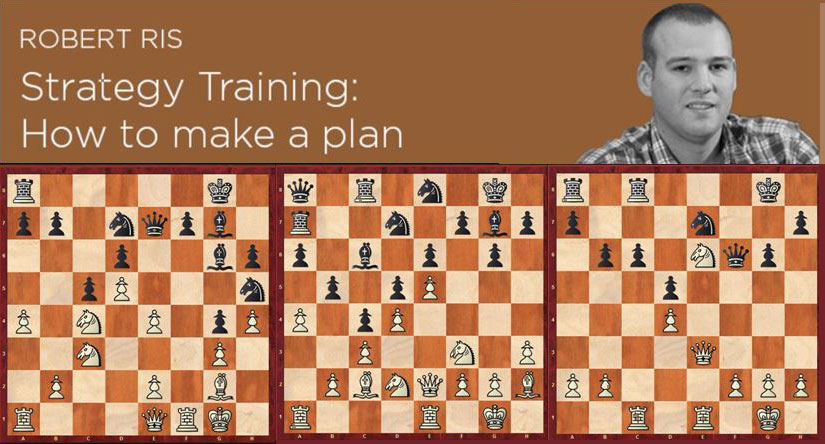
Strategy Training: How to Make a Plan in the ChessBase Shop
After the introduction, Ris begins with two videos which explain the importance of pawn play. This is a fundamental theme treated in this series. Ris points out the old adage that "every pawn move creates weaknesses". As a tournament player, I also feel the problem of not being able to move a pawn back and ending up in zugzwang. Often during the middlegame I find myself wondering if a pawn move will come back to haunt me later in the endgame. (Maybe this can be a good argument advocating for chess games with long time controls!)
Unlike top GMs, I do have problems in dealing with different pawn structures and often I need time to devise a plan or, like in this first theme, to evaluate the different consequences of a pawn move. This is the real appeal of chess, a field which is viewed as a science or an art depending on how much we admire a position and penetrate the meaning behind the interrelationship of the pieces and the pawn structure.
While writing this review I happened to play through a game by a very young Garry Kasparov, which in my opinion well shows the problem of creating weaknesses when a pawn is pushed.
Ponga a punto la capacidad de cálculo y aprenda las técnicas básicas para dotar de pilares sólidos a su ajedrez
Another topic treated in the series is that of "releasing the tension." Generally it happens in the centre, between two pawn formations that are in contact.
Improving the worst piece is another theme treated by Ris. It needn't even be said, but more than one time in my games I've seen players refrain from using a rook or another piece for more than 20-25 moves! This is a topic which has been much discussed in chess literature. In the former Soviet Union — because communism was considered intellectually superior — there was the habit to name openings and chess principles after Soviet players.
Vladimir Makogonov was a math professor, who had a significant role as second of Vasily Smyslov in his matches against Mikhail Botvinnik. He was friendly with both of them, and was invited by Botvinnik in the 70s to help the development of positional understanding by a new tactical genius, Kasparov.
Quoting GM Adrian Mikhalchishin, we know of about one of Makogonov rules (or "Makogonov's principle"), called principle of the worst piece. He said: "In a position when there are no direct threats, it is necessary to spot the worst placed piece, and try to improve it or exchange it."
Con la cuenta ChessBase siempre tiene acceso a la videoteca, el entrenador táctico, el entrenador de aperturas, la base de datos online, Let’s Check, Playchess.com... ¡Todo lo que necesita es una conexión a Internet y un navegador actualizado, da igual que tenga iPad, tableta, PC, iMac, Windows, Android o Linux!
If you want to know more about it, Mikhachishin has authored a FritzTrainer called: "The Secret Weapons of Champions", in which he explores the Makogonov principle with a wealth of different positions, from different games.
Ris explains how to understand what a weakness is, how it is created and how one can exploit it.
The last topic covered is prophylactic thinking, which is one of the elements distinguishing the master-level player from the amateur.
What did I gain from this course? The mind of amateurs / club players like me is limited by the tons of other things going on (e.g. listen attentively to my wife, while playing bullet — because strangely she absolutely must talk in that moment!). And while I knew the importance of pawn levers, and have read about it in books, I kind of forgot it. Hence IM Ris gave me a refresher which will help this aspect of my game in future tournaments.
Ris also gives some very important advice, he mentions every time we have a plan, we need to justify the plan through calculation. On this topic Ris has dedicated two other video series, so if you are unsure about your calculation abilities, then it would be wise to study these two FritzTrainers as well.
Pattern recognition is an important tool in modern chess, as it helps you to understand better the characteristics of a position. Particularly when you have been confronted with a surprise opening system played by your opponent, it helps when you can just
In every game of chess, there comes a moment when one is confronted with the question: what should I do now?
In fact, calculation training is also sprinkled liberaly throughout the "How to make a plan"; Ris mentions the necessity to become concrete in our evaluations, in order to understand how to continue. Take, for example, the following position:
White should continue with 25.♕g5 and here one can train one's own visualization, what to play after Black answers with: 25...♞f7? The goal of the review is not to give you a solution, but in this FritzTrainer Ris examines the position and explains at length how to continue.
Another useful piece of advice coming from the section on pawns, is to try to understand how the position changed once the opponent made a pawn move. Of course more than once Ris mentions the importance of having all our pieces participating in the game — when the position opens up, the pieces are already on the right squares for launching the attack.
Thinks of the advice I just listed as a series of routine questions we ask ourselves while analyzing a position. Again, I can only emphasise my proclivity for long time control games, which provide the time to find answers to these questions.

The real strength of the video series is, however, the exercise section. There are 50 interactive exercises in which Ris presents a position and then continues with asking us to take the wheel and find the right move. For most of our answers there is a video-clip answering why they are good or bad. And once the right move is found Ris goes on to explain why it is correct and elaborates, showing how the game continued — more insight into the "strategy". We see what squares were important to take control of, and how to make such control permanent through the exchange of the enemy pieces which could threaten that control.
I loved the 50 exercises because while we watch a video we are passive learners. If we are lucky some of our doubts are taken into account and explained, but most of the time those thoughts just disappear once the video is finished. Instead, the interactive exercises are something one must struggle with, and learn from, actively. And the struggle — the strain of our brain to find the right continuation in so many different positions — will definitely have an impact on our level of play over the board.

After the exercises there is a "training" section which is based on the possibility to play five different positions against Fritz online
There is a database with 97 games, which are lightly annotated by Ris, mostly at the point where he wants to show whether a maneuver is successful or not, and why.
The following game is an example of Ris' annotations:
Pros and Cons
While Ris wisely comments on the different themes, sometimes I felt he didn't give me the complete story — the "how" or "what he should have really done". For example, in position number 1:
A younger version of Ris played 22.♖fd1, which he says wasn't a bad move, but a bit indecisive. While he mentions there are many moves for White, he didn't tell me what would have been the correct plan for White, and how to achieve it. Since Black just played 21...a5 committing the pawn on a dark square, I thought maybe White could have tried 22.♕f2 which threatens ♗b6 and now the queen is more on the kingside, perhaps ready to start an attack.
I'm mentioning this because, again, the most important thing is to be an active learner. If I just expect to learn by osmosis, it will not work. But if I put myself in "dialogue" with the teacher.
I think another problem could be a confusion between "plan" and "maneuver", like when Ris shows the following position:
He says, "I could go to d1 and bring my knight to d2 but the question is: what to do next, if you have a plan, also think what happens after you have completed this plan." I believe that is more a maneuver than a plan. I answer the question: "How do I bring the knight to d2" by thinking "move ♕d2-d1 and play ♘b1-d2" — but this is not a "plan" because at the end of the day it didn't accomplish anything.
Instead we need to know what is the goal we want to achieve in that position, and once we establish the goal (or a series of goals) then we need to come up with a "plan" to achieve it/them. So the goal in the case of "bringing the knight to d2" could be "activate the pieces" or "centralize a piece." As you can see here I have mentioned two possible goals which should give me an advantage. Then the goal must also have a certain quality, which is to give me an advantage over the opponent. I believe there is a need to define some terms (in a military sense, because chess is a war), and keep those definitions in mind, in order to be able to use them in our games. This is particularly important, because our human minds, unlike our silicon friends, are based on language.
On the other hand is quite possible, since the game of chess is limited to 64 squares, that there are some standard plans, based on different pawn structures, which are always valid for a certain pawn structure. That's why the study of the openings shouldn't be based on memorizing some moves, but on the plans which spring from a given pawn structure. If it's true there are thematic plans — and Ris mentions few times some typical plans in the French, which made him decide on certain moves — then we need to put into action the typical advice to play through many games in the openings we play, in order to absorb (consciously or unconsciously) the patterns and plans typical of those openings, to help us create our own.
There are also a few points which seems counter-intuitive. In this position Ris explains the plan of removing the strong knight on f5 via the maneuver: ♘b1-a3- (Pc2-c3) ♘a3-c2-e3,

"Imagine the knight from b1 gets exchanged for the ♞e7 — I think I've made considerable progress," Ris explains.
Well, my problem is the following (and I freely admit I don't have the same deep understanding Ris has): To exchange a knight which has moved three times, plus a pawn move for freeing the c2-square, compared to a knight which has moved quite a bit less (to e7 and f5) seems to me like White has wasted two tempi. If the position was a little more open, maybe Black could really create some dangerous threats with those two extra tempi, like we have often witnessed in Morphy's games, or other great players teaching us the value of time in chess. I'd like more explanation here.
One more particular example from Ris' games:
Black could have continued exploiting his strength on the light squares, to counter White's plan to exchange the f5-knight, and definitely blocking a possible successful attack on the kingside. For example 15...♛e8 16.♘c2 ♛b5 17.♘e3 ♛d3 and Black can take on f5 with the queen or with the bishop if White exchanges the queens.
The point is, the "bad" bishop on a6 can become an active piece, which controls two diagonals. But Black needs to have some kind of prophylactic thinking to imagine what White wants to do, and prevent it.
Another feeling I had from listening to Ris was regarding the relative value of the pieces, this chess skill of understanding that a bishop is not worth "3" but maybe "1" if it's used like a pawn, and maybe "4" in case it seems a king in the center. It's the experience one gains over a long time in chess. Hence I felt sometimes he was developing plans not based on a pawn structure (like I thought he was teaching me, based on the title of the video lecture), but rather on which pieces he wanted to keep on the board and which he wanted to exchange.
This is something a chess book cannot really give us. Instead through listening attentively to Ris' voice and body language, I felt he was giving me more in terms of content than what the course is about — worth far more than the sticker price of the video series.
Final Thoughts
This is a course designed for an relatively advanced audience. For players who, say, know how to convert a queenside majority. An audience who wants to know when to push a pawn and fix the enemy pawn structure versus when it is better to exchange the pawns and release the tension. The bottom line is, it's a very important video series for those who want to work hard on their chess and are trying to reach master level, but cannot afford the cost of a personal coach.
It's also recommended for the high content of critical thinking required from the student. Anyone can learn tactical patterns and see a checkmate in 2-3-4 or more moves. But few acquire the ability to understand what are the needs of a specific position and to create a plan to outplay the opponent. Personally, I advocate the importance of studying openings, because a good opening repertoire often goes deep into the middlegame and the resulting endgames. But that said, I think our training regimen during the year needs to cover many different areas of the game. As surely as we need one book or DVD on the endgame to study each year, we also need something to improve our middlegame, and this FritzTrainer definitely fits the bill.
Enlaces
.jpeg)












